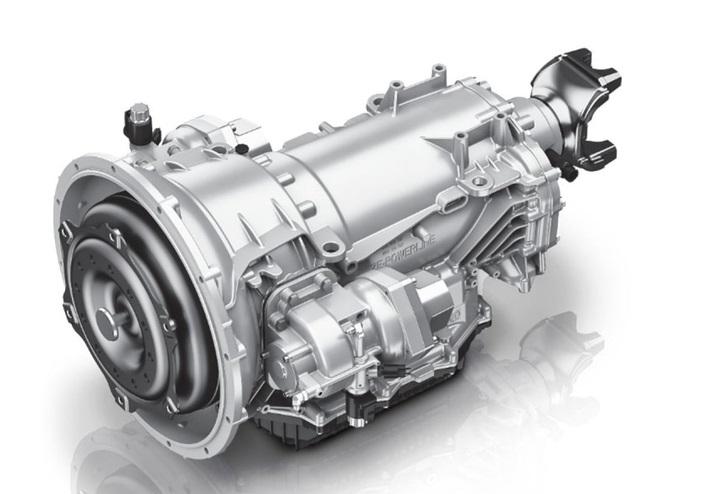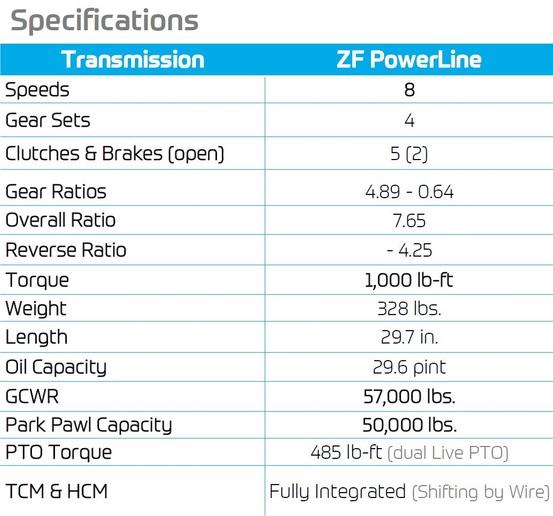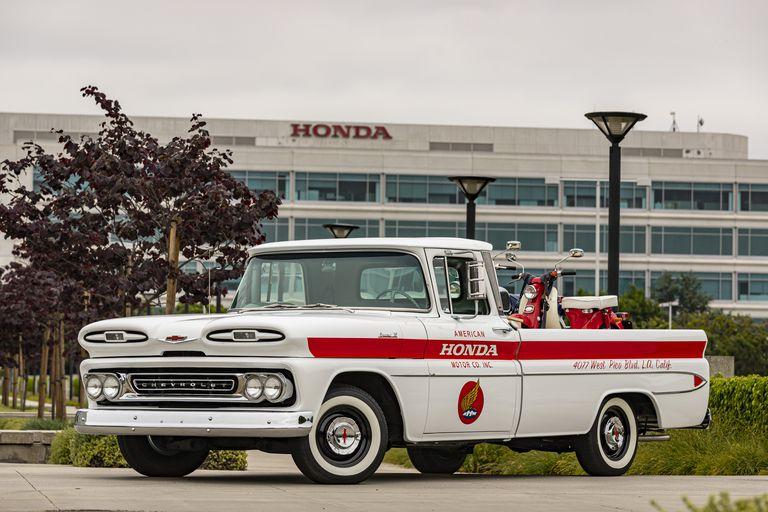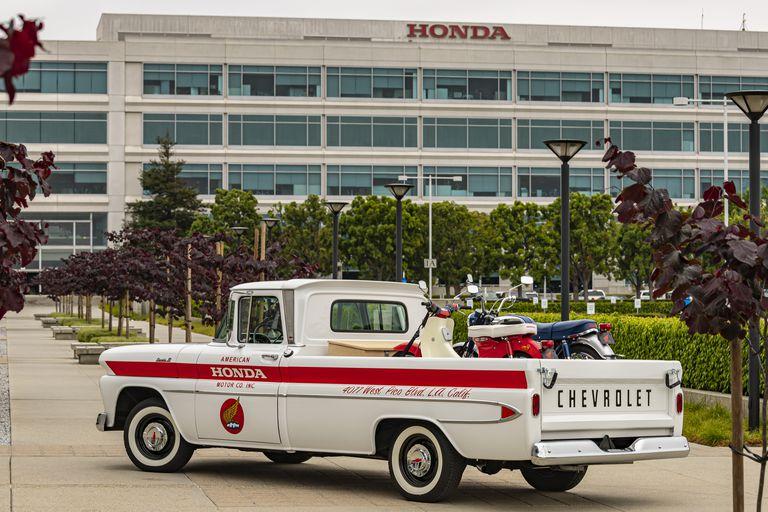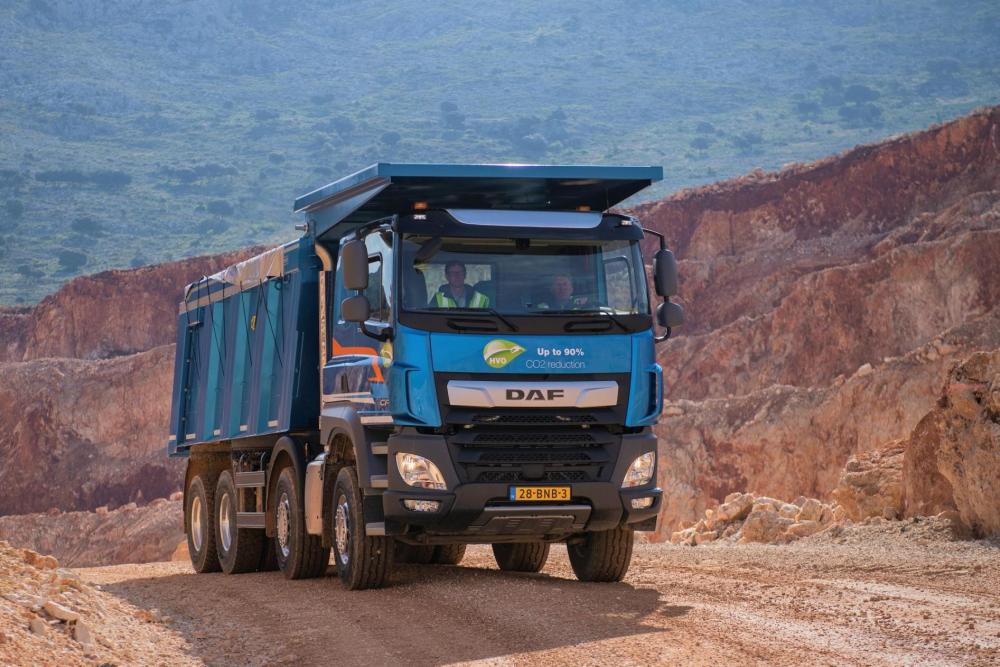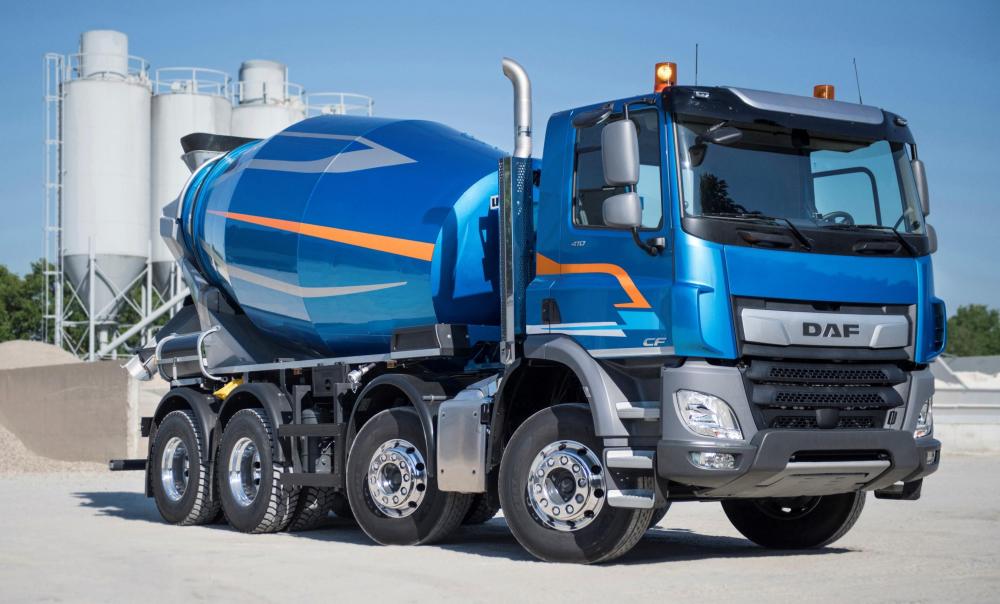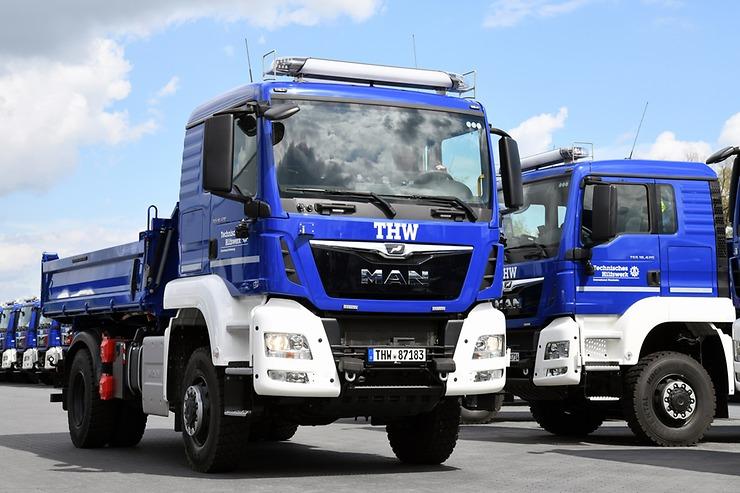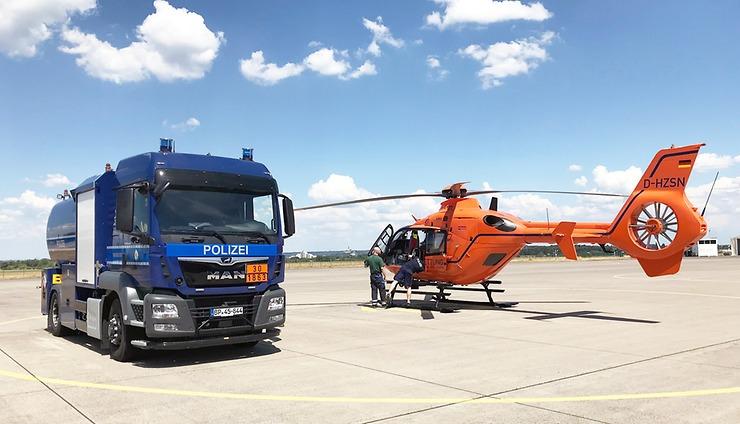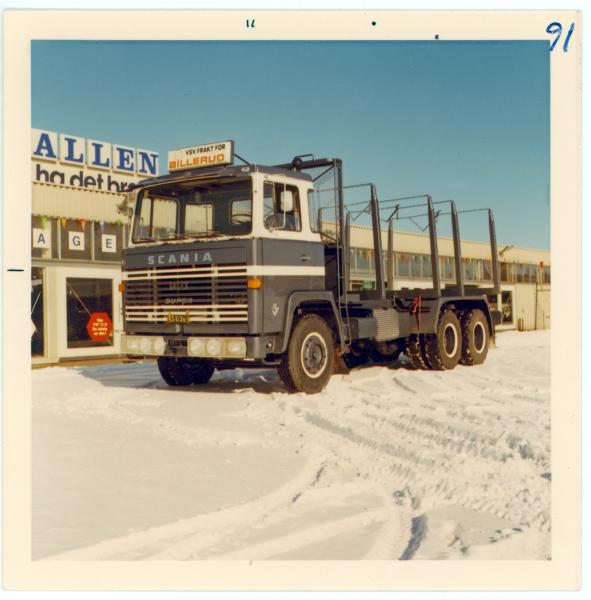
kscarbel2
Moderator-
Posts
18,875 -
Joined
-
Days Won
114
Content Type
Profiles
Forums
Gallery
Events
Blogs
BMT Wiki
Collections
Store
Everything posted by kscarbel2
-
Jim Park, Heavy Duty Trucking (HDT) / June 20, 2019 Medium-duty truck builders will soon have a groundbreaking new transmission to add to their data books, and heavy-truck makers will have more steering assist options to offer customers. German automotive supplier, ZF Friedrichschafen AG, recently demonstrated these and other nearly-market-ready technologies at press gathering at the Transportation Research Center near East Liberty, Ohio. The PowerLine 8HP torque-convertor automatic transmission is the big news here. It's hardly new though. It was officially introduced to the North American market exactly one year ago in Indianapolis. But more than 15 million copies of this transmission have been operating in passenger cars (fitted with the scaled-down 8AP version) across Europe and Asia since 2007. The 8HP is a "muscled-up" version of that same platform. ZF changed little in scaling it up for service in Class 3 to baby 8s save for building in some extra durability. ZF says the transmission should be on the road next year but wouldn't say which of the major truck makers would be first to market with the PowerLine 8. ZF did say, however, that this 8-speed will cover all of Allison's 1000, 2000 Series automatic transmissions and a good chunk of its 3000 Series transmissions. "With one product, we cover about 90% of our competitor's volume," said Andre Kohl, ZF's North American business development manager. It boasts some impressive specs and features, but performance will likely be its biggest selling feature. Reporters had the chance to drive two trucks equipped with the PowerLine 8, and one "baseline" truck for comparative purposes. It's impressive. Starting out, it will launch in first or second gear, depending on the load, and it will skip-shift when the opportunity presents itself. It has a neutral idle feature that disengages the torque convertor to take the load off the engine when the truck isn't moving. Gear ratios range from 4.89 in first to 0.64 in eighth, which is like double or maybe triple overdrive. There's plenty of latitude in the eight cogs for any driving condition, and ZF did say that fuel economy was a prime driver in the engineering process. "The PowerLine is at least — not up to — at least 10% better on fuel than any competitive product in same application," said Kohl. The transmission boasts 30% better acceleration than other transmission and a 45% weight advantage -- the PowerLine 8 weighs a paltry 328 pounds. Kohl also pointed out that the transmission, as it sits today, is ready for what the OEMs will be asking for in terms of meeting the pending GHG Phase II regs. It's ready for integrated stop/start assist which shuts off and starts the engine while at traffic lights, etc. "We incorporate an accumulator inside the transmission to help with restarting," he said. "This will help truck makers comply with GHG reduction rules in the future with engine stop/start technologies. When they are ready for it, we already are." It also features twin torsional dampers, which will help with downsped powertrains. These are more common to on-highway Class 8s, but Kohl says downspeeding is coming to medium-duty. There's also a lock-up clutch in first gear for improved energy efficiency. With the PowerLine 8, the torque convertor is used only to launch and stop the truck. Driving the PowerLine 8 proved pretty well everything Kohl said during his presentation. You literally cannot feel the transmission shifting gears. You can tell the shifts are happening based on the sound of the engine, but they are very quick and really smooth, and there's never a lag in torque as you accelerate. There's a short off-road loop at TRC that features a hill with a 23% grade. One of the trucks was loaded with 20,000 pounds of steel dunnage for a gross weight of about 37,000 pounds. The truck walked up that grade from a full stop at the bottom, and from a full stop mid-way up the hill (the hill-start assist feature came in handy that time). It even managed an upshift from first to second on one of my runs up the hill with full throttle applied right from the start. On the maintenance side you get “best in class” extended oil-change intervals and Kohl said the oil filter is good “for life”. It also features a fully integrated control units inside the casing, with no external sensors or harnesses. That should help with durability. Building on ReAX With advanced driver assistance systems now gaining popularity, ZF first introduced its ReAX assisted steering system in March 2015 at the Mid-America Trucking Show. Actually, it was TRW that introduced ReAX, but ZF acquired TRW later that year. At any rate, ReAX was one of the first such systems introduced to the heavy truck market, and the company has now developed a suite of assisted steering applications that offer drivers safety and convenience. In case you missed it, ReAX is an electric motor integrated into the hydraulic steering gear that provides a boost to the input torque supplied by the driver. It can be controlled to modulate steering force when maneuvering at low speeds and stiffened for highway driving. While that functionality is still present, ZF will soon offer a lane departure prevention function along with a haptic warning to help avoid blind-spot collisions. Called OnTrax Lane Keeping Assist, the system uses a forward-facing camera to determine the truck's lane position. If the truck drifts toward the lane markers without using the turn signal to indicate a lane change, the system will gently counter steer the truck back into the lane. I tried it on the 7.5-mile oval test track at TRC and found the nudge was certainly noticeable but easy to override — if a lane-change was in fact my intention. This version of OnTrax LKA will not center the truck in the lane, so the driver has to take control of the wheel after the counter-steering event to prevent the truck from heading toward the opposite side of the lane. With the addition of a few radar sensors, LKA is turned into a blind spot detection system called Lane Change Assist, providing drivers with a haptic warning if he or she is about to turn into an already occupied lane. The system shakes the steering wheel with much the same feel as driving over rumble strips. ZF said it opted for the haptic warning rather than an audible warning because of the proliferation of annoying beeps and bells and buzzers now cluttering the soundscape in most modern trucks. This version simply warns the driver, it doesn't prevent the maneuver. The basic Lane Keeping Assist system will be in production next year with an unnamed OEM, while the lane change assist feature is still a couple of years off because the sensors used aren’t yet in production. ReAX is also capable of full steering control in an autonomous driving situation. Reporters got a ride in a day-cab International LT that drove a simulated course through a truck terminal using GPS to guide the truck on its predetermined course. It started, stopped, turned right and left (using turn signals) on commands from a Pro AI controller. This configuration was equipped with two ReAX steering units, one on the steering gear and the other mounted on the steering column. The second was in place for redundancy. All the technologies presented by ZF will be available through OEM channels within the next year or two. I suspect though that by the time they come to market there will be additional functionality to report on. ZF has a history of innovation, and they won't be sitting still on this stuff for long. .
-
Because that was the norm in Europe at the time, owing to it's advantages. Scania's feeling to this day is that individual cylinder heads have several advantages. A cylinder head covering more than one cylinder imposes restrictions on the maximum potential for achieving efficient intake and exhaust flow, because provisions for cooling and clamping compromise cylinder head design. Since individual cylinder heads don't suffer from these obstacles, the head design can be optimized for rapid gas flow to achieve maximum fuel efficiency. And regarding maintenance, it's much cheaper and faster to remove and reinstall an individual cylinder head, than a single cylinder head covering two to six cylinders.
-
GM seeks continued exemption from Takata airbag recalls Sarah Kominek, Automotive News / June 20, 2019 General Motors filed a petition with NHTSA for the fourth straight year to avoid recalling millions of vehicles with Takata airbag inflators. The petition was posted in the Federal Register on Wednesday by NHTSA but was originally filed by GM on Jan. 11, 2019. The automaker requested the administration exempt GM from recalls that would require the company to replace the airbag inflators in more than 6 million trucks and SUVs. In a 2015 agreement with the U.S. government, Takata declared GM's front passenger inflators defective. Takata eventually filed for bankruptcy and in 2018 its safety products business was acquired for $1.6 billion by Chinese-owned Key Safety Systems, which has since renamed the business Joyson Safety Systems. At least 24 fatalities and about 200 injuries have been blamed on the Japanese company's malfunctioning airbag inflators, which exploded during accidents and spread shrapnel into passenger compartments. After NHTSA extended rulings on previous petitions, GM said it investigated and analyzed long-term performance of the inflators and found they "do not present an unreasonable risk to safety." GM said in the recent petition that the Takata inflators provided to the automaker "are not used by any other original equipment manufacturer" and are safe because of their unique design features.
-
Yes, born from Mack’s long time relationship with Scania, and the old man’s idea to gain economy of scale via such an agreement.
-
Paul, there are quite a few companies offering DPF (diesel particulate filter) retrofit solutions. In the UK, for example.
-
The first Scania V8 was an ENDT865/866 with individual cylinder heads.
-
Ford Trucks International / June 19, 2019 Ford Trucks continues to grow stronger in the European market! We are at your service across Europe with our extensive after-sales network! .
-
Andrew Wendler, Car & Driver / June 18, 2019 Restored 1961 Chevrolet Apache pickup faithfully recalls the fleet of similar Apaches that American Honda used as delivery vehicles in the company's early days. The authentically reproduced hand-painted graphics complement the Apache's 283-cubic-inch V-8 and three-speed manual transmission. Period-correct Honda 50 and CB160 motorcycles in the bed complete the effect. It's no secret that the 10-Best Trucks and SUVs–winning Honda Ridgeline is one of C/D's favorite mid-size pickups, but long before Honda began making pickups, let alone importing four-wheeled vehicles of any type to the United States, it made its mark selling motorcycles in Southern California. Not just any motorcycles, but inexpensive, lightweight, and nonthreatening motorcycles that appealed to buyers of all socioeconomic backgrounds and basically reinvented the domestic motorcycle market. But with no Ridgeline to call on, the task of keeping Honda's fledgling dealer network stocked required some outside assistance, so Honda assembled a small fleet of 1961 Chevrolet Apache pickups. They were detailed in AHM livery, and the company's sales force used them to make deliveries to dealers on a consignment basis. June 2019 marks American Honda's 60th anniversary, and to celebrate, the maker is revisiting those iconic Chevrolets and the role they played in launching the company here in the U.S. with a restored 1961 Chevrolet Apache 10 pickup presented in the classic AHM livery. So equipped, the trucks played a vital role in making Honda the number one selling motorcycle brand in the U.S in just a few short years. .
-
DAF Trucks Press Release / June 12, 2019 ‘Best in the market’ The DAF CF Construction series has won the prestigious TOP BAU Truck 2019 award in Slovakia, presented by leading magazine Transport a Logistika. Truck operators and drivers alike named DAF’s sturdy truck series as the best construction vehicles on the Slovakian market thanks to its robustness, high payloads, low operating costs, powerful drive trains and excellent driver-friendliness. “The high quality DAF CF Construction series is the Slovakian customer’s choice as it meets all requirements of modern business operations and offers great comfort to the driver at the same time”, said Viliam Bujna, CEO of LUXUR Media and publisher of Transport a Logistika magazine. “The range of DAF’s robust construction trucks offer the highest payloads in the market at the lowest operating costs.” “In addition, the state-of-the-art and powerful engines are in perfect harmony with the TraXon automated gearboxes and the wide range of DAF-in-house developed axles”, stated Bujna. “That guarantees industry leading on- and off-road capabilities. The CF Construction trucks simply are remarkable construction vehicles. And the drivers will agree, as the trucks offer class leading comfort, comparable to long haulage trucks.” An award to make us proud “We are truly proud to receive the TOP BAU TRUCK 2019 award”, added Richard Zink, Director Marketing & Sales and Member of the Board of Management at DAF Trucks. “The accolade is a valuable recognition from a comprehensive group of Slovakian experts. Moreover, the award underlines that our rigid and construction trucks are of the same high level of our award winning tractors: highly efficient, unmatched reliable and extremely comfortable.” DAF expands range for construction sector In order to further expand its reputation for offering the ideal truck for every application, DAF has recently expanded its product portfolio to include a number of new vehicle configurations, including an 8x4 ‘tridem’ rigid with double-drive tandem and steered trailing rear axle. The Dutch truck manufacturer has also introduced a 10-tonne front axle and a completely new 7.5-tonne non-steered trailing axle to extend its product portfolio. .
-
MAN Truck & Bus Press Release / June 13, 2019 In the past two years, the Procurement Agency of the German Federal Ministry of the Interior has ordered a total of 950 vehicles in various categories from MAN Truck & Bus Deutschland to be used by the country’s Federal Agency for Technical Relief (THW) and Federal Police. The THW is a German federal civil protection agency that provides technical relief during disasters, public emergencies and large-scale accidents, operating both in Germany and around the world. In a series of tenders the Procurement Agency of the Federal Ministry of the Interior awarded MAN Truck & Bus Deutschland contracts to supply a total of 950 vehicles to the THW. The 178 equipment vehicles are tried and tested MAN TGM 18.290 models with all-wheel drive, leaf-spring suspension on the front and rear axles and a long crew cab from MAN Individual. Add to this 210 MAN TGM 18.290 personnel lorries with crew cabs and a platform/tarpaulin-covered body, based on a 4x4 chassis with leaf-spring suspension on the front and rear axles. 400 MAN TGM 18,290 multi-purpose equipment wagons are also vested with this system. Some of the 152 MAN TGS 18.420 three-way tippers are fitted with loading cranes. The 10 tankers are used of the Federal Police for refuelling helicopters. To ensure that the fuel supply does not only function on well-developed airfields, the German Federal Police ordered tankers based on the MAN TGS 18.420 4x4H BL and equipped with on-demand MAN HydroDrive front wheel drive. “We are proud that the THW has opted for MAN. Emergency personnel and relief workers need particularly reliable and robust vehicles that must be operational at zero notice for many years. We’d like to wish all THW personnel our very best – and safe travels always,” said Holger Mandel, chairman of the Management Board of MAN Truck & Bus Deutschland. .
-
Iveco Truck & Bus Press Release / June 13, 2019
-
Iveco Truck & Bus Press Release / June 13, 2019
-
Scania Group Press Release / June 17, 2019 Thanks to some detective work and help from reliable Scania enthusiasts, we managed to track down the owner of the very first Scania V8 to roll off the production line. “I have always had a passion for new technology – now I’m driving electric,” says Henrik Olsson, now 81 years old. In the late 1960s, Henrik Olsson needed a replacement for the Scania LS76 that his transport company was using for timber haulage in the forests of Värmland in western Sweden. The contract for a new Scania had already been signed when, one Sunday, the salesman called again. “He said he’d heard a rumour about the release of a completely new model, a V8,” recalls Olsson, “and wondered if I’d be interested in becoming the first person to buy an LBT140.” Need for extra power That didn’t require much thought. Of course he was keen on the extra power: 350 hp compared with the 260 of the LS76. “We really needed that to handle the steep, slippery dirt roads. The LBT140 provided a sense of security. You knew you’d manage the hills without any problem.” Initially however, the new truck was not completely hassle-free. The engine was so powerful that the drive shaft broke a couple of times. “But on those occasions, the service was outstanding,” says Olsson. “That’s one of the reasons we stuck with Scania – plus the fact that the truck was good, of course.” “I’d love to start over again so I could drive electric trucks.” Having run his company for 20 years, Olsson sold the business, becoming an official for the Värmland province hauliers’ association. Now retired, he maintains a passion for vehicles. awaiting the delivery of the latest model. “I’ve always been interested in new technology, so of course I was curious. Driving an electric vehicle is a great feeling; the car reacts instantly, feels powerful and is completely quiet. I’d love to start over again as a driver so I could drive electric trucks.” So what happened to the first Scania V8? After four years and 600,000 problem-free kilometres, it was replaced. Its ultimate fate is unknown. .
-
Renault Trucks Press Release / June 17, 2019 Renault Trucks is 125 years of history. 125 years of know-how. 125 years of passion. 125 years of innovation. A legend in its own time. Ladies and gentlemen, we proudly present the RENAULT TRUCKS T HIGH 1894 EDITION https://www.en.renault-trucks.com/1894-edition . .
-
Renault Trucks Press Release / June 6, 2019 Transporters and fleet managers tell us how Renault Trucks improves their business and makes their life on African roads easier. .
-
Massive country.......massive truck market.
-
Ford Trucks Russia / June 7, 2019 The new Ford Trucks F-MAX tractor is presented to Russia's largest trucking companies at the ASMAP-2019 exhibition in Moscow. .
-
Volvo Trucks North America (VTNA) / June 13, 2019 We’ll show you the future — and change it — as we monitor and analyze critical components in real time. We provide proactive solutions to keep trucks on the road. Learn more about the expertise of our Uptime Center and Dealer Network from the video below. .
-
GM looks wistfully in rearview mirror and sees Hummer Jay Ramey, Automotive News / June 18, 2019 Axed in the darkest days of the auto industry crisis a decade ago, Hummer is now looking rosier and rosier in the rearview mirror, especially if you consider the rate at which General Motors' competitors are selling trucks and SUVs. Jeep is churning out vehicles at a pace not seen since World War II, as if suburbanites are mobilizing for Iwo Jima. Ford has not one but two Broncos in the works and has been making noises about ditching cars altogether. Even the Mustang will be some kind of truck very shortly. Ram has become a runaway hit for Fiat Chrysler Automobiles, which, if you look at its sales numbers, should really be called Jeep Ram Automobiles. General Motors is scrambling to adapt, seemingly adopting Ford's Big Bronco/Small Bronco tactic by introducing as many Blazer versions as it can. (We wouldn't bet against seeing a giant K5 Blazer at some point, at the rate things are going.) This brings us to the Hummer brand, which in its best days was a Gulf War I hero despite not seeing much combat and not being armored back in the day, and in its worst days was a caricature of itself in the form of Hummer H2s roaring between gas stations on the school run in some leafy suburb lest it run out. Arnold Schwarzenegger single-handedly made civilian H1 ownership a thing, all without social media. (Just let that achievement wash over you for a couple of minutes). That's how much power the Hummer brand once wielded, even before GM started churning out slightly more domesticated models. The gas crisis of 2005 dealt a serious blow to Hummer, but with the oil spigot once again turned back on, thanks to making the Midwest Plains states an earthquake theme park with timing slightly less predictable than Old Faithful, the Hummer brand soldiered on to see something approaching sensibility and variety, thanks to the H3 and the H3T. But it was not enough to withstand the pressures of the auto industry crisis that also saw the demise of Oldsmobile, Saab, Pontiac and Saturn. With the benefit of hindsight, it's hard to blame GM for killing off Hummer. A decade ago it seemed that by 2019 we'd all be driving very small hatchbacks that are either hybrid or electric, and hypermiling them to the point that turning on the A/C would make you ineligible for the diamond lane. In 2009, the vehicles of 2019 looked ... a lot smaller than they've turned out to be, and also a lot less expensive. Prius variants of all sizes, all with tapered wheel arches and steel wheels, were supposed to make up the bulk of the country's automotive landscape, and pickup trucks were supposed to be either electric or powered by tiny diesel engines, like they are in Europe. The landscape did indeed change -- but in a completely different way. Brands once considered above SUVs -- think Bentley, Rolls-Royce, Maserati, Alfa Romeo, Lamborghini -- are all aboard the SUV train today, with half of them costing as much as a house in the wealthy Indianapolis suburbs. We don't know when the SUV train will stop, but it's obvious GM now wishes that it had saved Hummer by introducing a Wrangler competitor back when it had the money to do so, thus allowing the brand to survive into the present day.
-
Navistar to Build Next-Gen Diesels at Alabama Engine Plant
kscarbel2 replied to kscarbel2's topic in Trucking News
Navistar pumping $125M into Alabama engine plant Commercial Carrier Journal (CCJ) / June 17, 2019 Navistar said Monday it will invest upwards of $125 million in new and expanded manufacturing capabilities at its Huntsville, Ala., engine plant over the next three years. The North Alabama plant currently manufacturers International-branded diesel engines, including the 12.4 liter big-bore A26 engine offered in International’s Class 8 on-highway trucks lineup. The additional capabilities put the plant at the head of the line to produce Navistar’s next-generation large-bore powertrains developed with global alliance partner and stakeholder Traton. “Over the last two decades, the State of Alabama has been a wonderful partner for Navistar as we have developed and produced big-bore engines and other products in the state,” says Navistar Executive Vice President and Chief Operating Officer Persio Lisboa. “Today, we are excited to have the opportunity to expand our presence in Alabama, while adding to our array of next-generation products.” Huntsville Mayor Tommy Battle called Navistar “a longstanding corporate partner in our community” adding he was pleased the company sees Huntsville as a strategic part of its growth strategy. The facility expansion is expected to add 145 jobs. “We welcome the new production component to Navistar’s manufacturing operations and look forward to a successful future,” Battle says. -
VW's $2 Billion Truck IPO Reflects Push to Trim the Empire Christoph Rauwald, Bloomberg / June 17, 2019 Volkswagen AG’s plan to list its truck division later this month will test whether it can pull off a feat that was once unthinkable for the German automotive giant: get smaller. For decades, the world’s biggest carmaker only knew how to expand -- adding Bentley luxury cruisers, Ducati racing bikes and Scania heavy trucks while taking its network of factories well past the 100 mark and its headcount over 640,000. Even in the face of the debilitating diesel-cheating scandal in 2015, the manufacturer didn’t trim its portfolio, bolstering investment in electric cars instead and even creating a new division for mobility services. Now with the pace of change in the auto industry quickening, Volkswagen is trying its hand at trimming the empire. If the listing of a minority stake in Traton SE -- a truck and bus maker with three vehicle brands and valued at as much as 16.5 billion euros ($18.5 billion)-- goes well, it would give Chief Executive Officer Herbert Diess more sway to balance the often diverging interests of VW shareholders including the Porsche and Piech owner family, Lower Saxony and powerful labor unions. Healthy Valuation “Traton’s IPO pricing suggests a healthy valuation which puts a spotlight on VW’s significant sum-of-its-parts disconnect,” RBC Capital Markets analyst Tom Narayan said in a note. Concerns over the company’s ability to switch to electric vehicles is “unfairly” weighing on its share price, the analyst said. Volkswagen rose 0.2% to 141.42 euros at 11:46 a.m. in Frankfurt trading, taking gains this year to 1.8%. For now, Diess is seeking deeper technology partnerships and the possible sale of assets like transmission maker Renk AG and MAN Energy Solutions, which develops engines. A successful Traton listing, targeted for June 28, could even spark rival Daimler AG to follow suit with a carve-out of its own truck business. Lagging Peers Traton's return on sales is rising, but still trails major heavy-truck competitors. The truck group comprises three main assets, Scania, MAN and Volkswagen-branded budget trucks sold in South America and Africa, as well as a unit offering digital services to fleet operators. With 29 production and assembly sites globally, the business last year sold 223,000 vehicles. While that’s 14% more than a year earlier, it’s less than half of Daimler’s truck division, the world’s biggest. Volkswagen is offering 50 million Traton shares at 27 euros to 33 euros apiece, plus a possible over-allotment of 7.5 million shares, meaning at the top end of the price range, the sale would raise as much as 1.9 billion euros. Here are the key points in one of the biggest initial public offerings in Europe this year: Sales Pitch Traton is looking to woo investors by combining the best-in-class technology and strong margins of the Scania unit with the prospect of a turnaround at MAN and growth potential in key markets, according to company presentations and research from advising banks seen by Bloomberg. The plan includes the following four pillars: Scania is the group’s crown jewel, and Traton will aim to show it can maintain the heavy-truck specialist’s profitability. The Swedish brand is expanding its use of alternative-fuel technology like hydrogen ahead of stricter emissions rules and introducing digital services to generate more revenue from fleet operators. MAN has long been a problem, but some investors like a turnaround story, and so Traton will push its effort to revive the German division’s weak returns. This will be underpinned by replacing a 12-year-old truck with a new model next year. MAN also has room to expand in the lucrative aftermarket business. Traton is a major player in Brazil -- a hugely profitable truck market before the economy tanked -- and a recovery there will play well for the manufacturer’s VW-branded budget trucks, which could expand in the Middle East, Africa and Mexico. Traton is still more a collection of parts than a whole, and the company will talk about synergy prospects with a target to cut costs by 700 million euros by combining purchasing and engineering. Scania is leading development of the so-called CBE, a 13-liter engine that’s due to power more than half of Traton’s heavy trucks in 2025. Strengths Chief Executive Officer Andreas Renschler, 61, is the mastermind behind Traton. After helping to establish Daimler’s commercial vehicles business as the world’s largest, he was lured to Volkswagen in 2014. Despite the partly overlapping operations, he’s improved earnings over the past four years, mainly by enforcing closer cooperation between long-standing rivals Scania and MAN. Investor interest in Traton will largely be a bet on Renschler’s veteran skills to deliver in the cyclical truck market. The timing of the listing, which was delayed earlier this year, is complicated by global volatility. The window may be as good as it gets. Rival Volvo Group -- the main pure-play competitor -- has gained 26% this year. “It’s no secret that the market environment is very volatile,” VW Chief Financial Officer Frank Witter told reporters on Monday. “It’s not ideal, but it’s not bad either.” VW remains open to sell more Traton stock at a later stage, up to a maximum stake of 24.9%, if market conditions are supportive, he said. Weaknesses Traton has only small bridgeheads in the key North American and Chinese markets, and the prospects for expanding those positions face obstacles. In North America -- the truck industry’s largest profit pool -- Traton merely owns a 16.8% shareholding in Navistar International Corp., which doesn’t it allow it to do much. Lifting the stake will cost money and add complexity. Meanwhile, Navistar still faces fierce competition from market leaders -- Daimler’s Freightliner, Volvo’s Mack and Paccar Inc. While Daimler and Volvo have functioning production joint ventures in China, the world’s biggest truck market, Traton’s cooperation with Sinotruk Hong Kong Ltd., where its holds a 25% stake through MAN, has yet to deliver the hoped-for results. Alliances can fall short of aspirations to create economies of scale, with the recent tensions at the Renault-Nissan Alliance a fresh reminder of the difficulties in uniting separate cultures. Traton also has a cooperation with Hino Motors Ltd., a Toyota Group company, on electric technology, product development and purchasing. MAN has long attempted a turnaround, but improvements have been tepid compared to an aggressive restructuring at Volvo that doubled margins within roughly three years. MAN’s production footprint in high-cost Germany and a lineup that includes less-profitable medium-duty trucks limits the potential for improvement.
BigMackTrucks.com
BigMackTrucks.com is a support forum for antique, classic and modern Mack Trucks! The forum is owned and maintained by Watt's Truck Center, Inc. an independent, full service Mack dealer. The forums are not affiliated with Mack Trucks, Inc.
Our Vendors and Advertisers
Thank you for your support!


